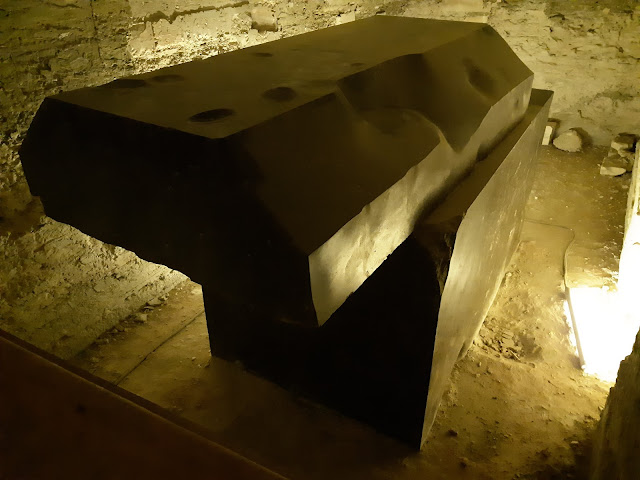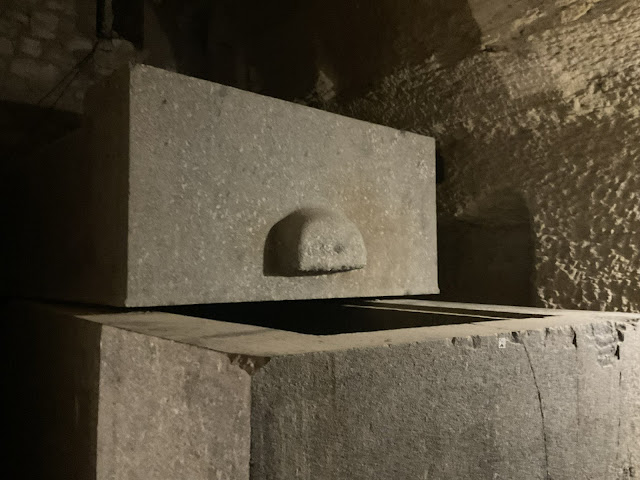The Serapeum at Saqqara is the tomb of the sacred Apis bulls that were associated with the god Ptah, whose cult center was in Memphis. An avenue of sphinxes leads to the Serapeum, which is composed of two long corridors that once housed the mummified remains of the bulls. The tomb was in use from the time of Amenhotep III in the New Kingdom through to the Ptolemaic Period.
 |
| Serapeum of Saqqara |
Priests selected certain bulls based on their markings and divine birth. The bulls were treated with a lot of privilege during their life. Upon death, the bulls were mummified and placed in sarcophagi in an elaborate celebration.
Inscriptions record many kings who made offerings in the Serapeum. Two sons of Ramses II, Khaem-waset and Meren-ptah, donated several bulls, jewelry and shabtis as princes and High Priests of Ptah.
One of the Serapeum sarcophagus
The Serapeum from inside
One of The Serapeum sarcophagus
What is the mystery of the Serapeum?
The mystery surrounding the Serapeum of Saqqara primarily revolves around the construction and transportation methods used to create the elaborate underground tombs. Each sarcophagus in the Serapeum weighs an astonishing 60 to 70 tons and is carved from a single block of granite.
What was the Serapeum used for?
Serapeum, either of two temples of ancient Egypt, dedicated to the worship of the Greco-Egyptian god Serapis (Sarapis). The original elaborate temple of that name was located on the west bank of the Nile near Ṣaqqārah and originated as a monument to the deceased Apis bulls, sacred animals of the god Ptah.









No comments:
Post a Comment